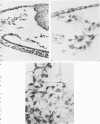Abstract
Fertilized chicken eggs were incubated for 48 hours while exposed to extremely low frequency magnetic fields (ELMF) of 10 Hz, 100 Hz and 1000 Hz with intensities of 0.12, 1.2 and 12 micro T. Gross morphological and histological analysis of the exposed embryos revealed the following effects: (1) ELMF of 100 Hz/1.2 micro T had the most consistent and powerful inhibitory effect on embryogenesis. Development of embryos was reduced to the formation of the three primitive layers. Brain vesicles, auditory pit, neural tube, foregut, heart, vessels, and somites were not developed. Glycosaminoglycans were almost absent. (2) The above results demonstrate a window effect because embryos exposed to 100 Hz/1.2 micro T were less developed than embryos exposed at lower and higher intensities and frequencies. (3) Developing organs reacted with different sensitivity to ELMF of specific frequencies and intensities. Somites were not disturbed by exposure to 10 Hz with any of the intensities used. Formation of blood vessels was completely blocked by ELMF of 1000 Hz/12 micro T while traces of other organs were present. (4) The drastic embryological disturbances described were obtained with much lower intensities (1 micro T = 0.01 Gauss) than those used in studies by other investigators. (5) Embryological alterations induced by ELMF may depend on disturbances in the presence and structure of glycosaminoglycans which are essential elements in cellular activities, including cell migration. (6) The use of ELMF of low intensity may be a powerful method to investigate embryogenetic mechanisms and may also be a useful technique for investigation of other biological systems.
Full text
PDF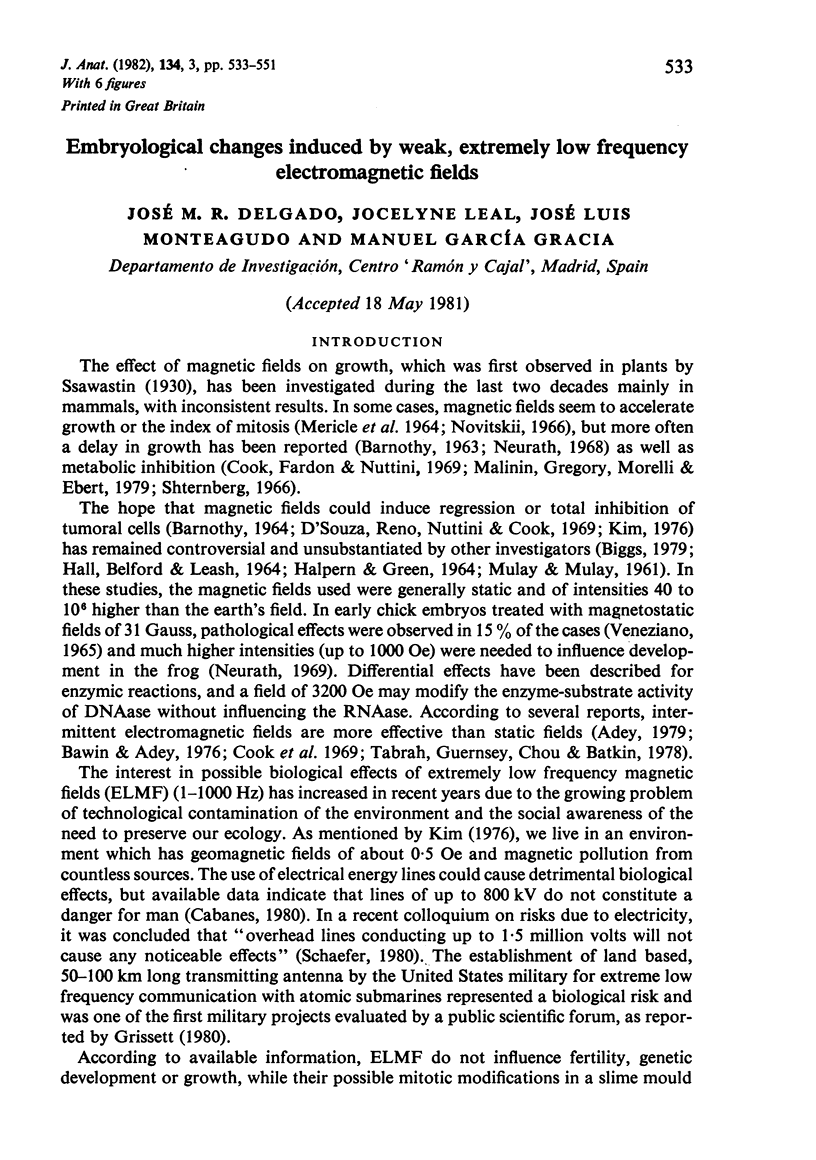

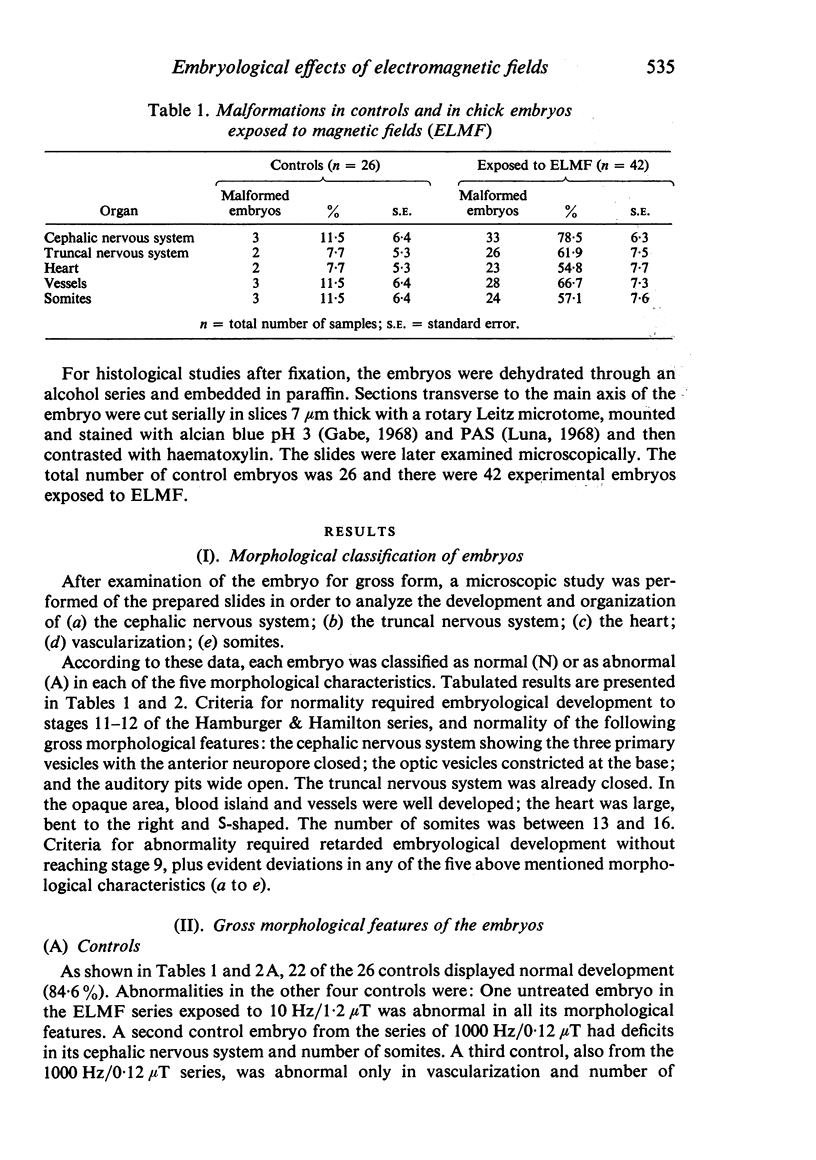



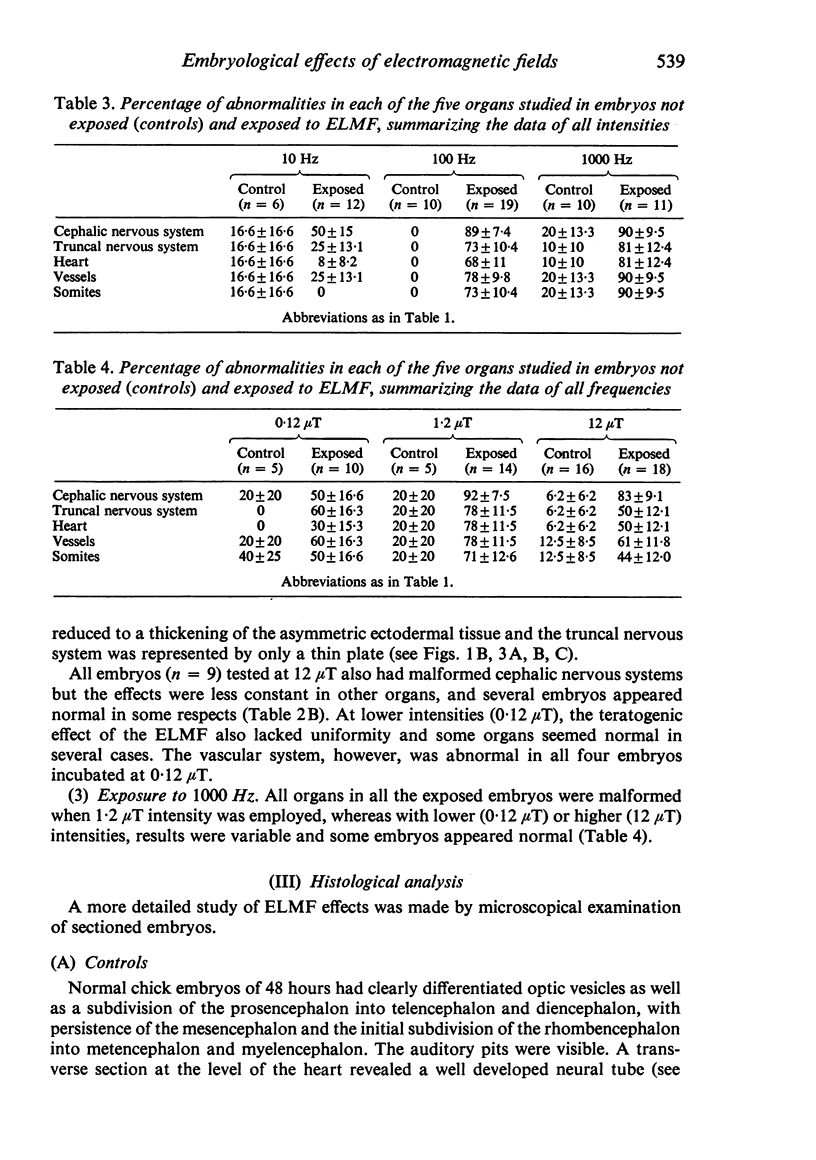

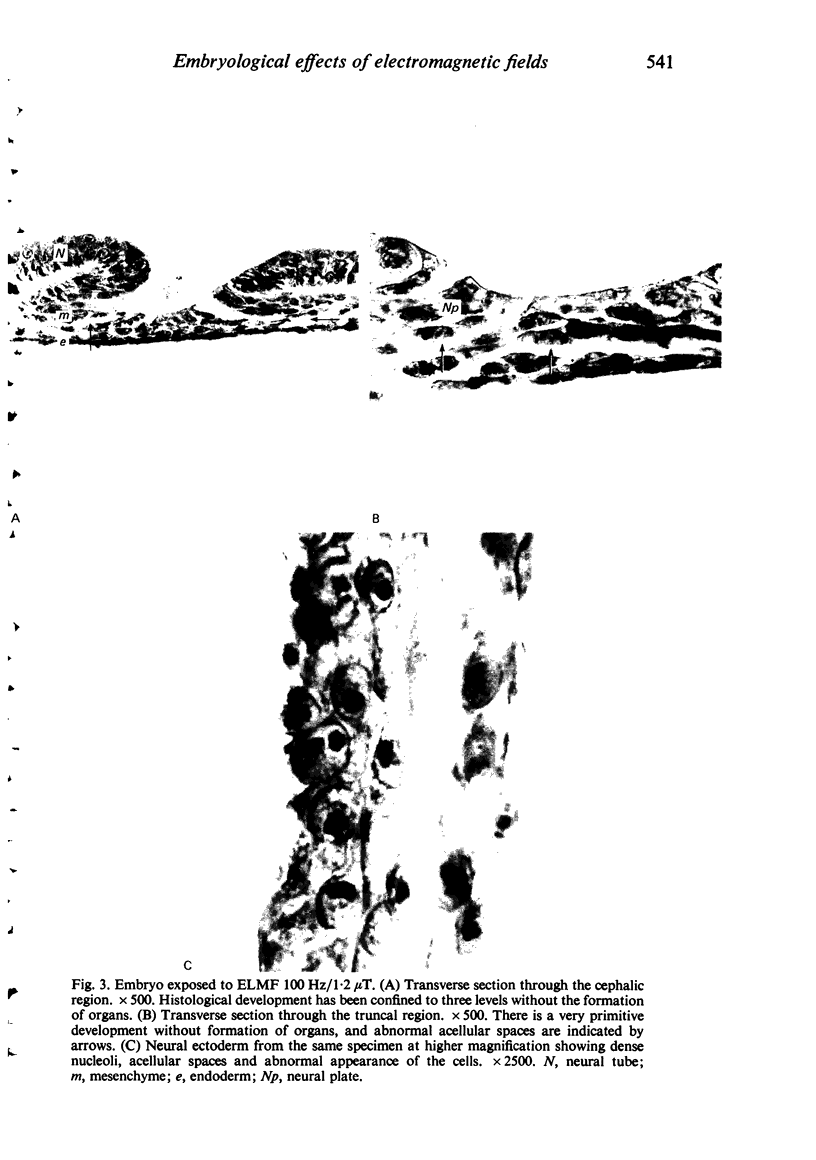
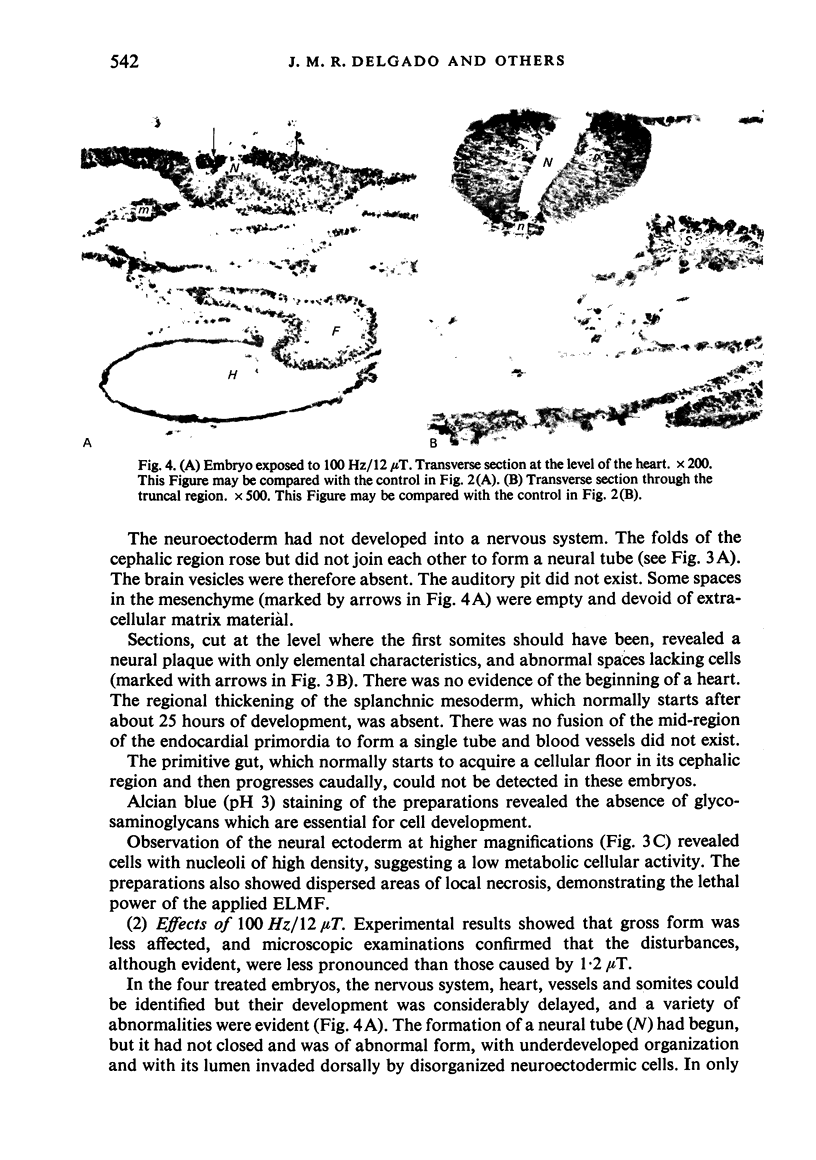
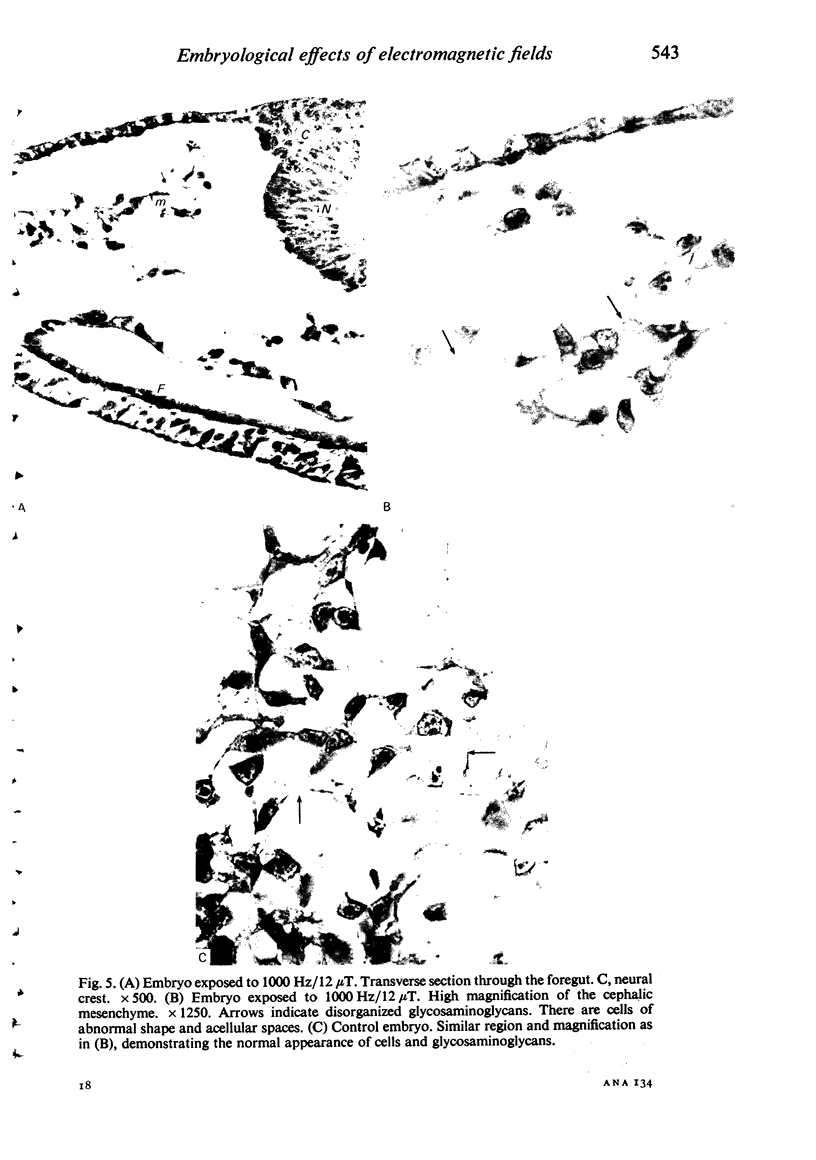

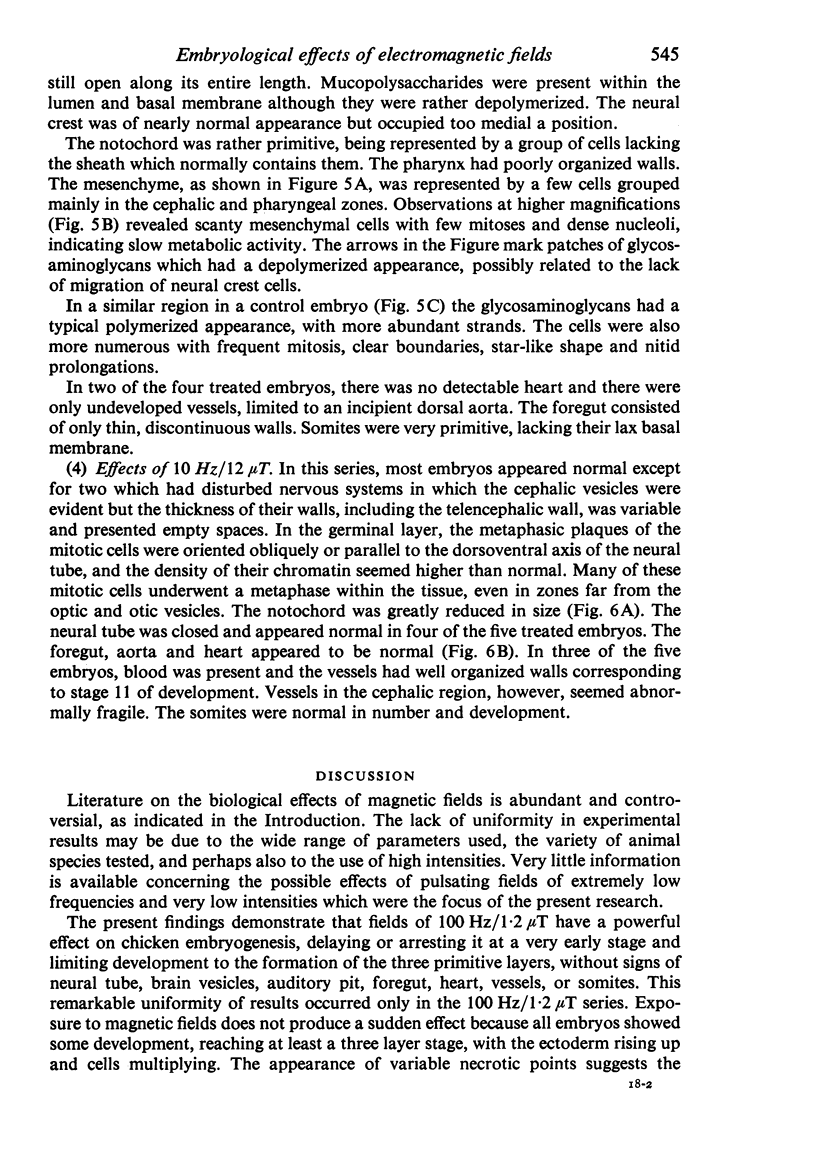

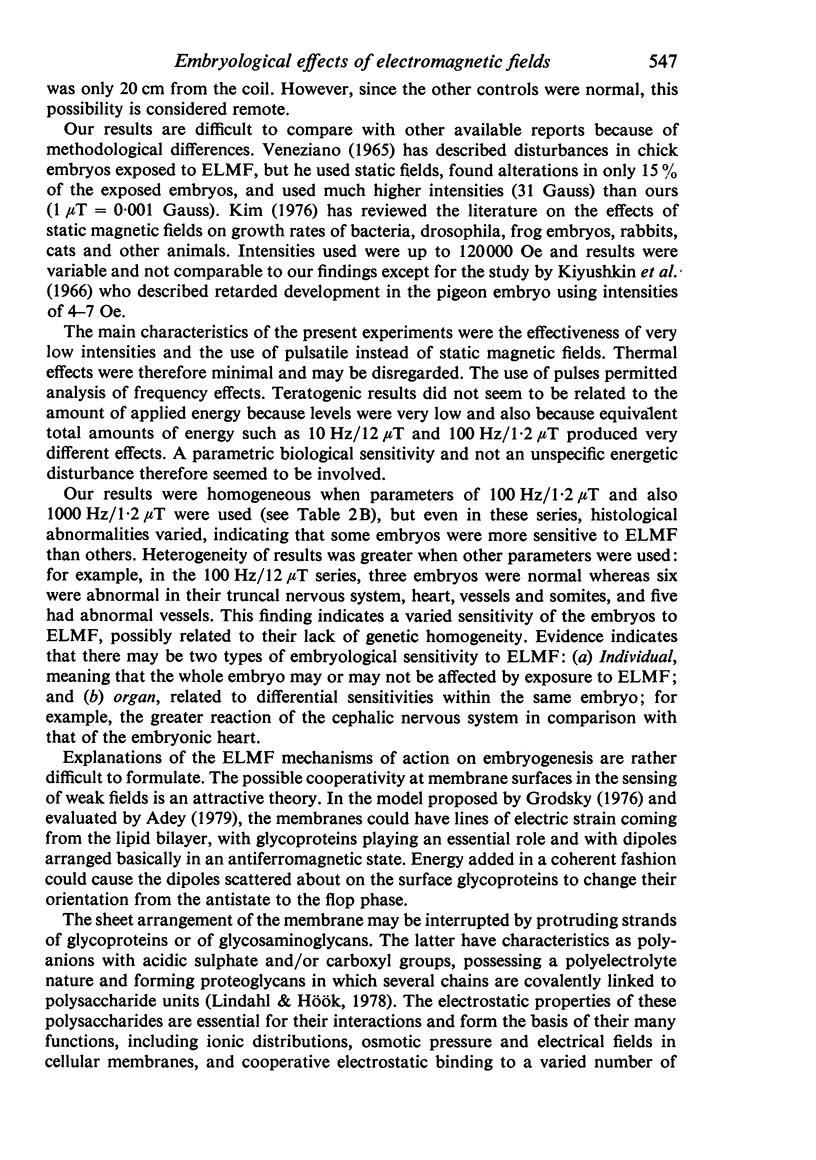
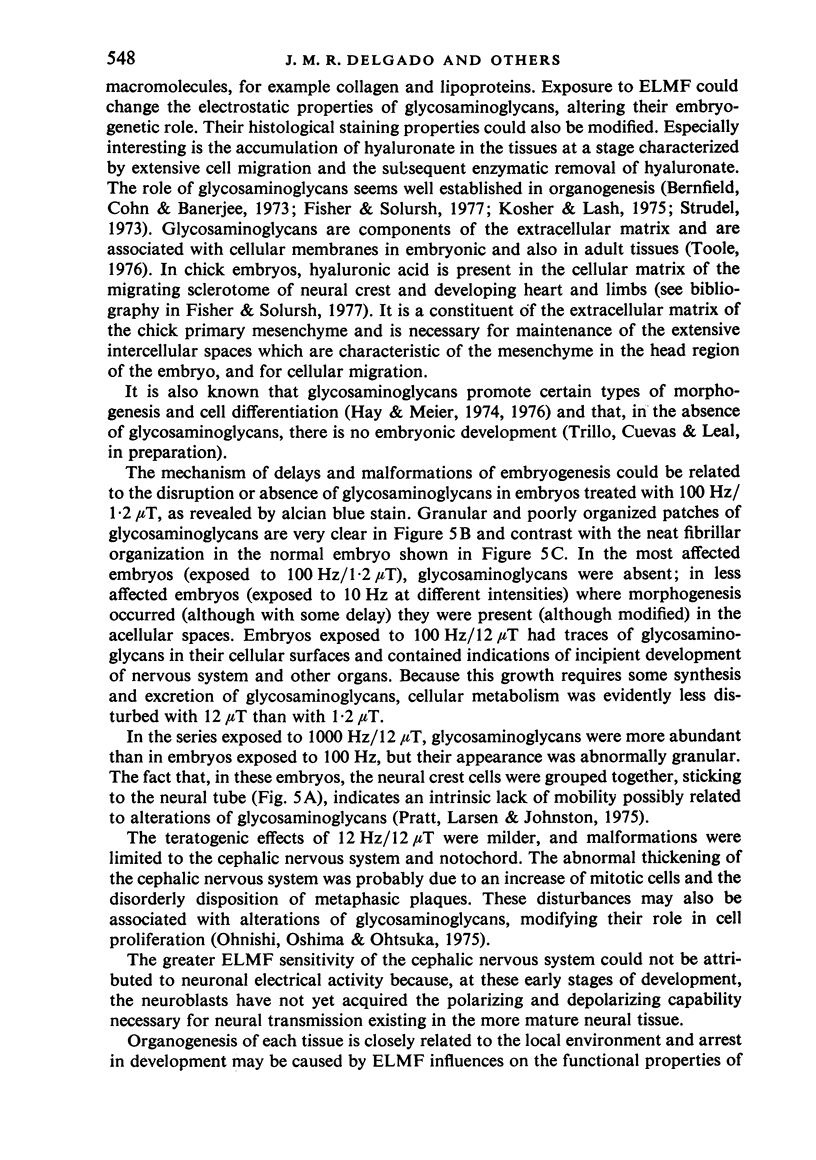
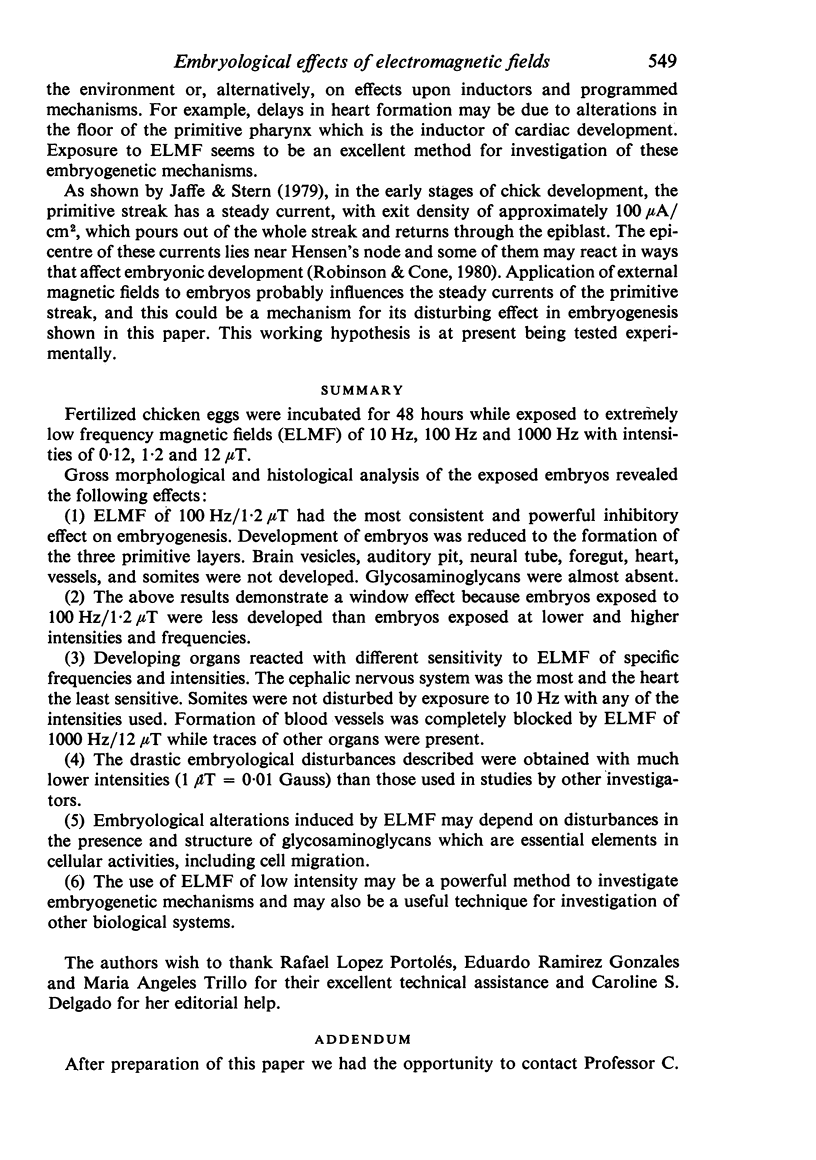
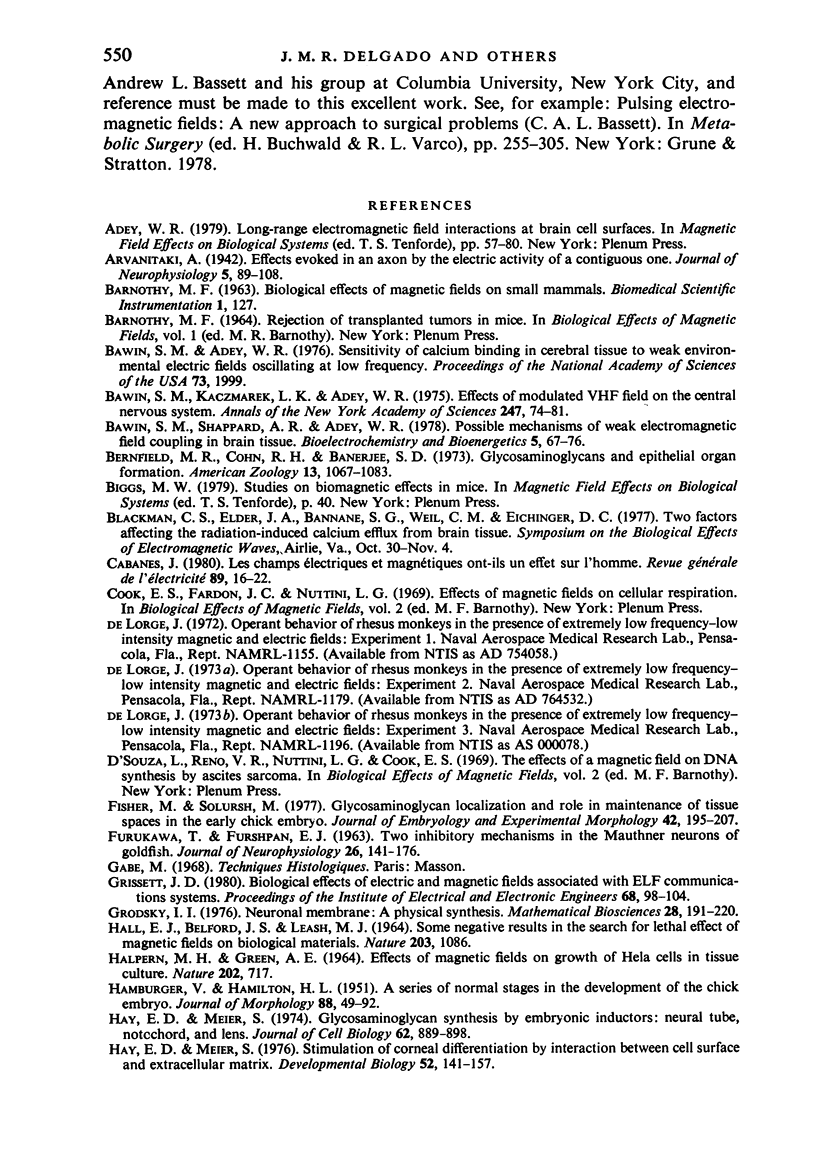

Images in this article
Selected References
These references are in PubMed. This may not be the complete list of references from this article.
- BARNOTHY M. F. BIOLOGICAL EFFECTS OF MAGNETIC FIELDS ON SMALL MAMMALS. Biomed Sci Instrum. 1963;1:127–135. [PubMed] [Google Scholar]
- Bawin S. M., Adey W. R. Sensitivity of calcium binding in cerebral tissue to weak environmental electric fields oscillating at low frequency. Proc Natl Acad Sci U S A. 1976 Jun;73(6):1999–2003. doi: 10.1073/pnas.73.6.1999. [DOI] [PMC free article] [PubMed] [Google Scholar]
- Bawin S. M., Kaczmarek L. K., Adey W. R. Effects of modulated VHF fields on the central nervous system. Ann N Y Acad Sci. 1975 Feb 28;247:74–81. doi: 10.1111/j.1749-6632.1975.tb35984.x. [DOI] [PubMed] [Google Scholar]
- FURUKAWA T., FURSHPAN E. J. Two inhibitory mechanisms in the Mauthner neurons of goldfish. J Neurophysiol. 1963 Jan;26:140–176. doi: 10.1152/jn.1963.26.1.140. [DOI] [PubMed] [Google Scholar]
- HALL E. J., BEDFORD J. S., LEASK M. J. SOME NEGATIVE RESULTS IN THE SEARCH FOR A LETHAL EFFECT OF MAGNETIC FIELDS ON BIOLOGICAL MATERIALS. Nature. 1964 Sep 5;203:1086–1087. doi: 10.1038/2031086b0. [DOI] [PubMed] [Google Scholar]
- HALPERN M. H., GREENE A. E. EFFECTS OF MAGNETIC FIELDS ON GROWTH OF HELA CELLS IN TISSUE CULTURE. Nature. 1964 May 16;202:717–717. doi: 10.1038/202717a0. [DOI] [PubMed] [Google Scholar]
- Hay E. D., Meier S. Glycosaminoglycan synthesis by embryonic inductors: neural tube, notochord, and lens. J Cell Biol. 1974 Sep;62(3):889–898. doi: 10.1083/jcb.62.3.889. [DOI] [PMC free article] [PubMed] [Google Scholar]
- Hay E. D., Meier S. Stimulation of corneal differentiation by interaction between cell surface and extracellular matrix. II. Further studies on the nature and site of transfilter "induction". Dev Biol. 1976 Aug;52(1):141–157. doi: 10.1016/0012-1606(76)90014-2. [DOI] [PubMed] [Google Scholar]
- Jaffe L. F., Stern C. D. Strong electrical currents leave the primitive streak of chick embryos. Science. 1979 Nov 2;206(4418):569–571. doi: 10.1126/science.573921. [DOI] [PubMed] [Google Scholar]
- Kim Y. S. Some possible effects of static magnetic fields. TIT J Life Sci. 1976;6(1-2):11–28. [PubMed] [Google Scholar]
- Kosher R. A., Lash J. W. Notochordal stimulation of in vitro somite chondrogenesis before and after enzymatic removal of perinotochordal materials. Dev Biol. 1975 Feb;42(2):362–378. doi: 10.1016/0012-1606(75)90340-1. [DOI] [PubMed] [Google Scholar]
- MULAY I. L., MULAY L. N. Effect of a magnetic field on sarcoma 37 ascites tumour cells. Nature. 1961 Jun 10;190:1019–1019. doi: 10.1038/1901019a0. [DOI] [PubMed] [Google Scholar]
- Neurath P. W. High gradient magnetic field inhibits embryonic development of frogs. Nature. 1968 Sep 28;219(5161):1358–1359. doi: 10.1038/2191358a0. [DOI] [PubMed] [Google Scholar]
- Ohnishi T., Ohshima E., Ohtsuka M. Effect of liver cell coat acid mucopolysaccharide on the appearance of density-dependent inhibition in hepatoma cell growth. Exp Cell Res. 1975 Jun;93(1):136–142. doi: 10.1016/0014-4827(75)90432-2. [DOI] [PubMed] [Google Scholar]
- Pratt R. M., Larsen M. A., Johnston M. C. Migration of cranial neural crest cells in a cell-free hyaluronate-rich matrix. Dev Biol. 1975 Jun;44(2):298–305. doi: 10.1016/0012-1606(75)90400-5. [DOI] [PubMed] [Google Scholar]
- Robinson K. R., Cone R. Polarization of fucoid eggs by a calcium ionophore gradient. Science. 1980 Jan 4;207(4426):77–78. doi: 10.1126/science.207.4426.77. [DOI] [PubMed] [Google Scholar]
- Tabrah F. L., Guernsey D. L., Chou S. C., Batkin S. Effect of alternating magnetic fields (60--100 gauss, 60 Hz) on Tetrahymena pyriformis. TIT J Life Sci. 1978;8(3-4):73–77. [PubMed] [Google Scholar]







